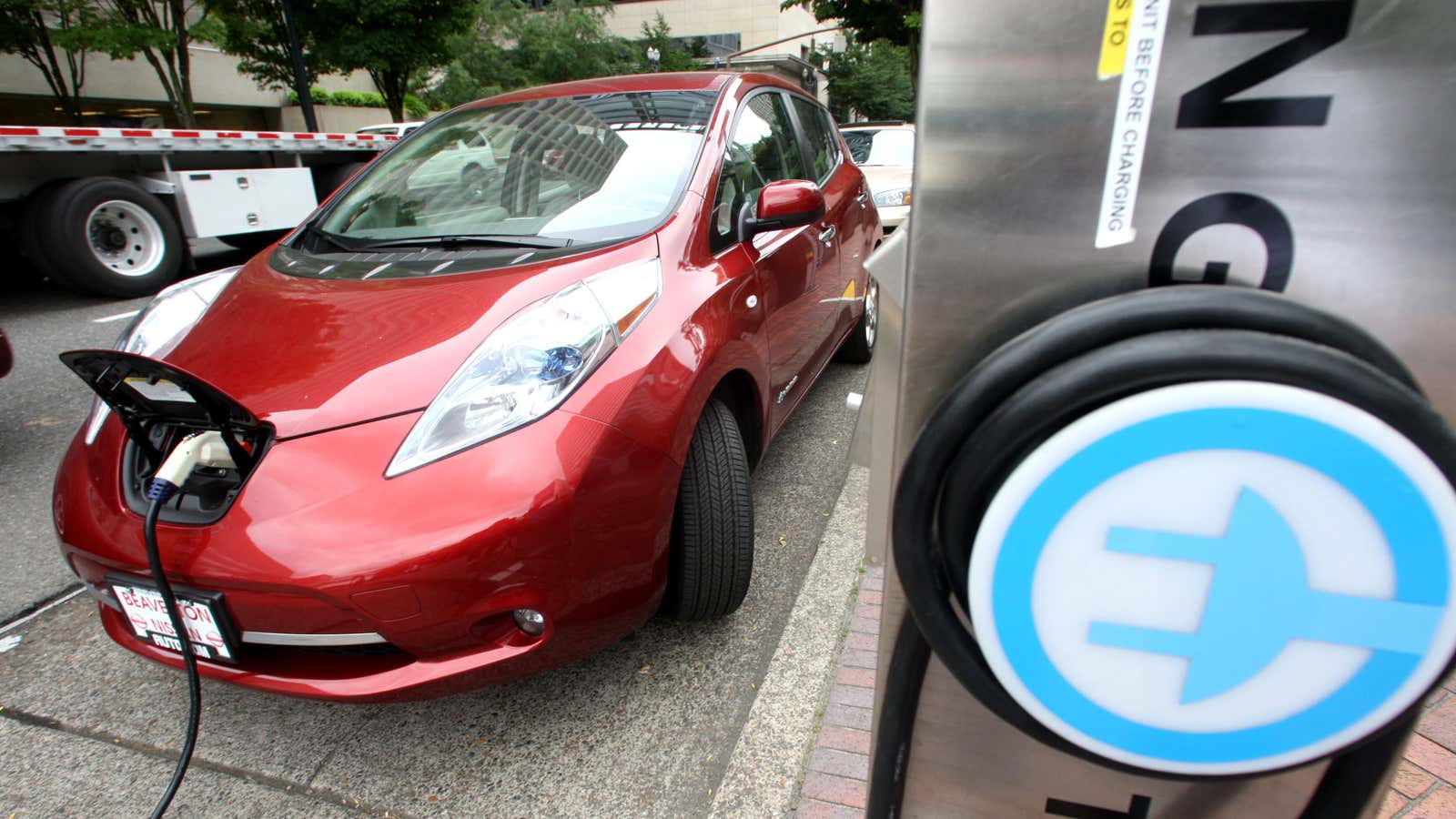California, New York and six other US states announced yesterday they would collaborate to put 3.3 million electric cars on the road by 2025, by promoting the installation of charging stations and encouraging ownership of zero-emission vehicles. (Separately, the federal government has set a target of 1 million electric cars by 2015.)
The eight states have been in the vanguard for clean-running cars and collectively represent 23% of the US auto market. According to a memorandum of understanding, they will also set targets for purchases of zero-emission vehicles for government fleets, consider offering electric-car buyers financial incentives, and standardize and streamline the process of granting permits for charging stations.
That’s all well and good. But the main reason for the initiative is also the fundamental obstacle holding back sales of most electric cars: their limited range. With models like the Ford Focus Electric and Nissan Leaf able to go only 75 miles on a charge, the lack of charging stations has kept even green-minded buyers out of the showrooms.
The average American commute is 37 miles roundtrip (pdf, p. 12), though the number of so-called mega-commuters who travel more than 50 miles a day is growing, according to the US Census Bureau. (The traffic-clogged commute between San Francisco and Silicon Valley is about 100 miles roundtrip, for instance.)
While that average commute would seem to fall well within the 75-mile range of an electric car, keep in mind that this is the range only under optimal conditions. Climbing hills, driving at highway speeds or in the cold drains a car’s battery faster and leaves little power for post-commute trips to take the kids to soccer practice or go to the grocery stores. And a weekend trip outside the city? Forget it. Building enough charging stations to compensate for that lack of range will cost many tens of millions of dollars, though the states haven’t put a price tag on the effort.
So how about spending some of that money on studying Tesla Motors—or maybe buying its Model S for government fleets to boost the Silicon Valley automaker’s production? Tesla is the only US electric carmaker with a model that can go more than 200 miles on a charge. Selling for between $60,000 and $100,000, the Model S is hardly a mass-market car, though as we’ve written, it outsells 10 other big automakers in California. But it’s the business model that the states should buy.
The range of the Model S and the forthcoming Model X sports utility vehicle means that Tesla drivers don’t need to charge anywhere but at home and perhaps at their workplace. For longer distances, they can stop at “Supercharger” stations strategically placed along highways that let them add 150 miles of range in as little as 20 minutes.
Currently, money is being spent on installing much-slower chargers at stores, shopping malls and other urban locations in the hope that drivers will use them. Tesla says it will blanket the US with its Superchargers for a fraction of the cost, because it studies the driving patters of its customers and installs charging stations only where they tend to travel. This isn’t hard; most other electric cars also record their drivers’ habits. If privacy concerns could be addressed and automakers would be willing to share that data with government transportation planners, the rollout of public charging stations could be more targeted and cash-efficient.
Within a few years, Tesla plans to make a third-generation car that the company will sell in the $30,000 range. By then it’s likely other automakers will offer models with improved range. And that could make all those charging stations being bankrolled by states and other governments as useful as the corner payphone.
